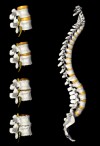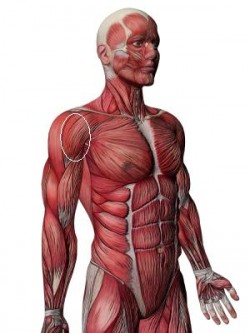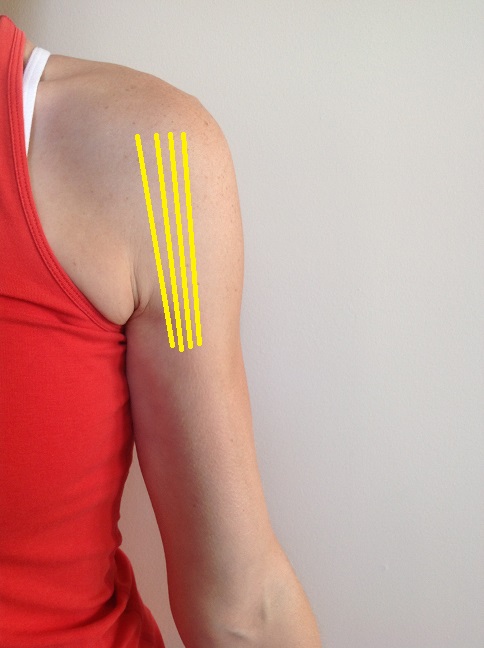
Laser Therapy
The Theralase Laser Therapy System is a well-recognized low intensity laser system that is used by many professional athletes for their injuries.
It has a reputation for achieving rapid healing for various injuries affecting the musculoskeletal system. This includes injuries to the muscles, joints, tendons and ligaments to name a few.
Laser therapy using the Theralase System involves placing the laser diodes directly on the area of injury. This allows the laser diode to transmit photon energy to penetrate the tissue. Photons are particles of light energy that are absorbed by a variety of micro-molecules within the cell. This process initiates a number of physiological responses that are beneficial for healing. In simpler terms, light energy is converted into biochemical energy which helps to restore normal cell structure and function.
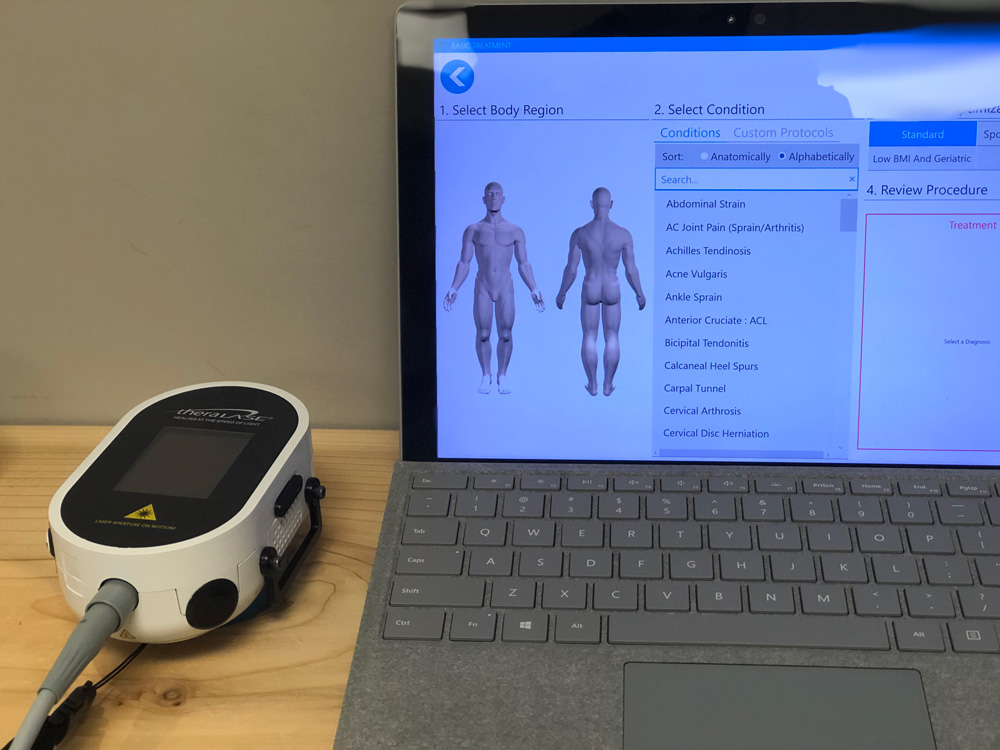
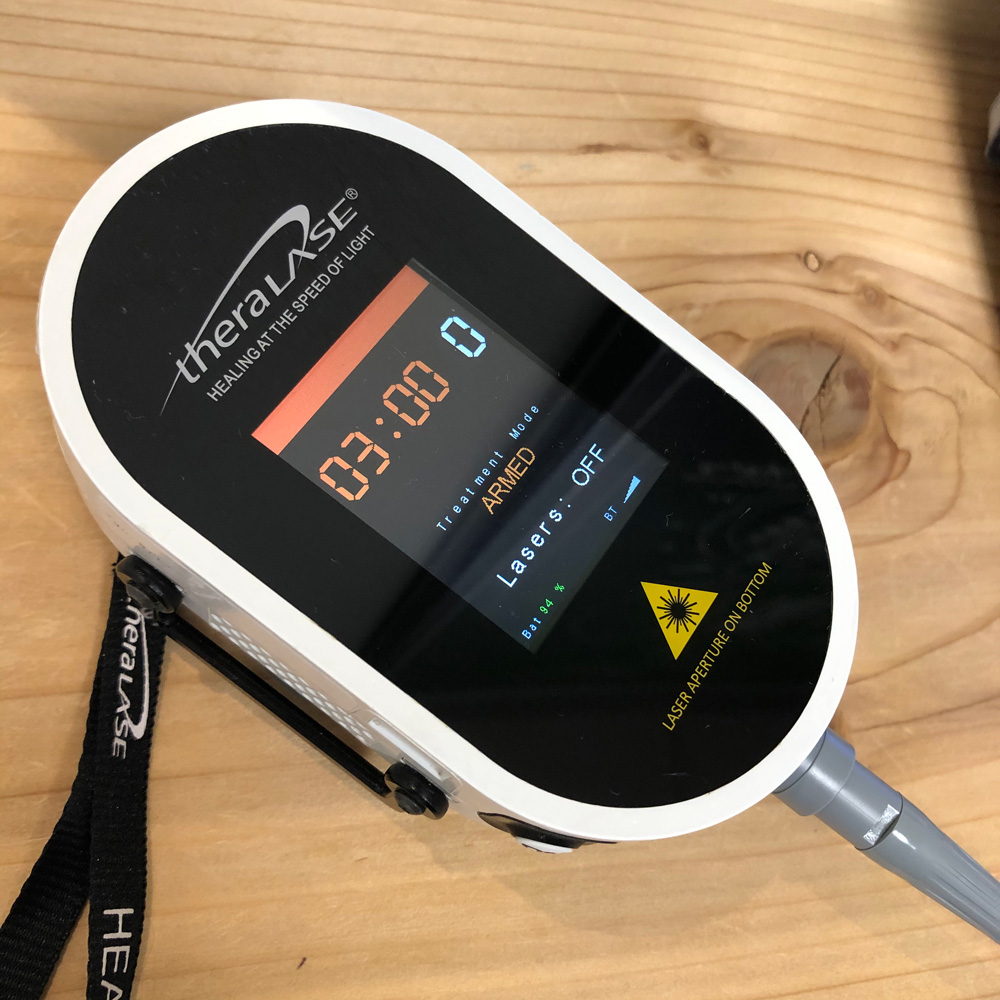
Our Theralase TLC-2000 system is among the newest generation of laser systems and we are very excited to offer this new technology. It has some very unique abilities, perhaps different from other lasers on the market. For example, the TLC2000 adjusts the settings according to a patient’s individual characteristics. The TLC-2000 has a patented technology that measures the depth of the target tissue prior to treatment, so that the dosage and length of treatment is perfect for that person. It makes logical sense really; imagine a person that is quite large getting their deep spinal joints treated, as opposed to a very slight person. The target depth might be significantly different. This new laser helps us measure that difference and deliver the most appropriate amount of stimulus to that patient.
COMMON QUESTIONS
Lasers deliver specific photons of light at very specific wavelengths. Different cells in the body have photoreceptors to accept and respond to those wavelengths of light. For some of these cells, they can turn the light energy into chemical energy. This leads to various cellular changes that are essential in tissue healing. From this, patients see a positive effect on pain, inflammation and tissue healing.
Treatment using the Theralase device is not painful. In contrast to medical grade lasers which generate heat and cut through various tissues (think of hair or tattoo removal), Theralase is a class 3b laser that can be considered a “cold” laser. It does not generate heat. It does not hurt at all. The laser energy can assist healing of various tissues in a very non-invasive, pain free manner that is extremely comfortable for the patient.

Laser therapy is used in the treatment of various medical conditions across different fields of healthcare. Some common conditions that can benefit from laser therapy include musculoskeletal and joint pain, soft tissue injuries, would healing, neurological disorders, inflammation and swelling. Laser therapy works by stimulating cells at a deeper level, which promotes circulation, reduces inflammation, accelerates tissue repair, and can help manage pain. The specific type of laser used and the treatment parameters depend on the condition being treated.
Laser therapy can have side effects, though they are typically mild and temporary. The side effects largely depend on the type of laser treatment, the area being treated, and individual factors like skin type or medical history. Some rare side effects of laser therapy include redness or swelling and mild pain or discomfort. The side effects are generally temporary and should resolve within a few days to weeks, but it’s always important to follow post-treatment instructions and consult your practitioner if any concerns arise.
Yes, there are several contraindications for laser therapy. These are situations or conditions where laser treatment should not be used due to the risk of harm or adverse effects.
Laser therapy is generally avoided during pregnancy, especially in areas such as the abdomen or pelvic region, as there is insufficient research to confirm its safety.
- Laser therapy should not be applied over known or suspected cancerous areas, as it may promote cell proliferation or worsen the condition.
- Laser therapy should not be used over areas with active infections, as it could potentially exacerbate the infection or lead to further complications.
- Individuals with conditions like lupus or porphyria, which make them more sensitive to light, should avoid laser treatments.
- Laser therapy is typically not recommended for individuals with certain implants, especially in the areas of pacemakers or defibrillators, as the electromagnetic field may interfere with the device’s function.
- Laser therapy should not be applied to areas with active blood clots or any condition that could worsen with increased circulations.
- Caution is advised when using lasers on patients with certain endocrine disorders like thyroid conditions, particularly over the thyroid area. Individuals with unstable cardiovascular conditions might not be suitable candidates for laser therapy, as it could affect blood circulation.
- Direct exposure of the eyes to laser light, particularly high-power lasers, can lead to serious eye damage.
Always consult with a healthcare provider or a professional trained in laser therapy to determine if laser treatment is suitable based on your medical history and specific conditions.
Laser therapy is not covered by provincial health insurance plans (such as OHIP in Ontario or MSP in British Columbia) because it is typically considered a form of alternative or complementary treatment. Provincial health plans mostly cover medically necessary treatments and procedures, but laser therapy falls outside of that in many cases. Many private insurance plans, especially those with extended health benefits, may cover laser therapy.
That being said, at Burlington Sports Therapy, our laser therapy is performed by our chiropractors and our physiotherapists. It’s best to check with your specific insurance provider to understand if you have coverage for chiropractic and or physiotherapy. If you do, the laser therapy performed by these practitioners is eligible under your coverage
If you are in the Burlington, Oakville, Hamilton and surrounding areas and are in need of Laser Therapy, contact Burlington Sports Therapy today.
At Burlington Sports Therapy, laser therapy is offered through our physiotherapists and our chiropractors. Given this, it can be billed under either designation for insurance purposes. If you are in the Burlington, Oakville, Hamilton or surrounding areas looking for laser therapy, call our office today.
Preparing for a laser therapy session is generally straightforward, but there are a few steps you can take to ensure the best results.
- Depending on the area being treated, wear loose comfortable clothing that allows easy access to the area. Drink plenty of water before the session, especially if you’re having laser therapy for pain management or muscle recovery.
- Staying hydrated helps your body respond better.
- Notify your chiropractor or physiotherapist at Burlington Sports Therapy if you are taking any medications like blood thinners, anti-inflammatories drugs or any medications that increase sensitivity to light.
- Depending on the type of laser you may experience some mild discomfort during your session.
- Arrive a little early to fill out any forms and discuss your medical history, if it’s your first session.
- Before your session ask about any post-treatment instructions.
By preparing in these ways, you’ll help ensure the best possible outcome for your laser therapy.
During a laser therapy session, the experience will generally be quite simple and non-invasive. You will be asked to sit or lie down, depending on the area being treated. You will be given protective eyewear to shield your eyes from the laser light, especially if the treatment area is near your face or eyes.
At Burlington Sports Therapy, we use a Theralase device, which is a hand-held device that emits laser light. The light penetrates your skin at various depths depending on the type of laser used and the condition being treated. The treatment can last anywhere between a few minutes to 30 minutes. It should not be painful but you may experience a light discomfort or prickling sensation.
There is typically no downtime, and you can return to regular activity immediately. Depending on the treatment type you may need multiple sessions spaced apart. At Burlington Sports Therapy, laser therapy is delivered by our chiropractors and physiotherapists.
Yes, laser therapy can be combined with other treatments, and doing so is often beneficial for enhancing healing, reducing pain, or improving the effectiveness of the overall treatment. The combination depends on the condition being treated and the goal of the therapy. Some common combinations include physiotherapy and chiropractic. Laser therapy help reduce pain and inflammation, which can make physiotherapy exercises more effective.
Laser therapies can complement chiropractic adjustments by reducing inflammation and muscle spasms, helping to a speed up recovery. Laser therapy when used in combination with massage therapy can help reduce muscle stiffness and pain, improving the range of motion and healing process. After surgery, laser can be used as part of the rehabilitation process to speed up recovery, reduce pain and promote tissue healing.
Before combining treatments, it’s a good idea to consult with a healthcare professional to ensure the therapies complement each other effectively and do not interfere with one another.
Low-level laser therapy (LLLT) and other types of laser treatments differ mainly in their purpose, mechanism, and the intensity of the lasers used. Low-Level Laser Therapy (LLLT): Primarily used for therapeutic purposes, such as pain relief, reducing inflammation, improving tissue healing, and stimulating cellular regeneration. It’s commonly used in physical therapy, rehabilitation, and wound healing.
LLLT uses low-intensity lasers, often referred to as “cold lasers,” that do not generate heat. The energy they emit is used to stimulate cells and promote healing at a cellular level without causing damage to tissues. The low-intensity laser light penetrates the skin and stimulates the mitochondria in cells, which enhances ATP (adenosine triphosphate) production. This boosts cellular repair, reduces inflammation, and promotes healing.
LLLT has minimal or no side effects because of the low energy used. It’s considered very safe for most patients. In short, the primary difference is that LLLT is aimed at healing and regeneration with low-energy lasers, while other laser treatments tend to focus on cosmetic, surgical, or medical interventions with higher-energy lasers that can alter or remove tissue.
Lasers deliver specific photons of light at very specific wavelengths. Different cells in the body have photoreceptors to accept and respond to those wavelengths of light. For some of these cells, they can turn the light energy into chemical energy. This leads to various cellular changes that are essential in tissue healing. From this, patients see a positive effect on pain, inflammation and tissue healing.
Treatment using the Theralase device is not painful. In contrast to medical grade lasers which generate heat and cut through various tissues (think of hair or tattoo removal), Theralase is a class 3b laser that can be considered a “cold” laser. It does not generate heat. It does not hurt at all. The laser energy can assist healing of various tissues in a very non-invasive, pain free manner that is extremely comfortable for the patient.

Laser therapy is used in the treatment of various medical conditions across different fields of healthcare. Some common conditions that can benefit from laser therapy include musculoskeletal and joint pain, soft tissue injuries, would healing, neurological disorders, inflammation and swelling. Laser therapy works by stimulating cells at a deeper level, which promotes circulation, reduces inflammation, accelerates tissue repair, and can help manage pain. The specific type of laser used and the treatment parameters depend on the condition being treated.
The duration of laser therapy is different for every person and every condition. Sometimes treatment requires as little as a few minutes, while other conditions require as long as 20 minutes a session. Similarly, different conditions require a different number of treatments. For some, a benefit from laser therapy treatment can occur after only a few treatments.
At Burlington Sports Therapy, laser therapy is offered through our physiotherapists and our chiropractors. Given this, it can be billed under either designation for insurance purposes. If you are in the Burlington, Oakville, Hamilton or surrounding areas looking for laser therapy, call our office today.
Preparing for a laser therapy session is generally straightforward, but there are a few steps you can take to ensure the best results.
- Depending on the area being treated, wear loose comfortable clothing that allows easy access to the area. Drink plenty of water before the session, especially if you’re having laser therapy for pain management or muscle recovery.
- Staying hydrated helps your body respond better.
- Notify your chiropractor or physiotherapist at Burlington Sports Therapy if you are taking any medications like blood thinners, anti-inflammatories drugs or any medications that increase sensitivity to light.
- Depending on the type of laser you may experience some mild discomfort during your session.
- Arrive a little early to fill out any forms and discuss your medical history, if it’s your first session.
- Before your session ask about any post-treatment instructions.
By preparing in these ways, you’ll help ensure the best possible outcome for your laser therapy.
During a laser therapy session, the experience will generally be quite simple and non-invasive. You will be asked to sit or lie down, depending on the area being treated. You will be given protective eyewear to shield your eyes from the laser light, especially if the treatment area is near your face or eyes.
At Burlington Sports Therapy, we use a Theralase device, which is a hand-held device that emits laser light. The light penetrates your skin at various depths depending on the type of laser used and the condition being treated. The treatment can last anywhere between a few minutes to 30 minutes. It should not be painful but you may experience a light discomfort or prickling sensation.
There is typically no downtime, and you can return to regular activity immediately. Depending on the treatment type you may need multiple sessions spaced apart. At Burlington Sports Therapy, laser therapy is delivered by our chiropractors and physiotherapists.
Yes, laser therapy can be combined with other treatments, and doing so is often beneficial for enhancing healing, reducing pain, or improving the effectiveness of the overall treatment. The combination depends on the condition being treated and the goal of the therapy. Some common combinations include physiotherapy and chiropractic. Laser therapy help reduce pain and inflammation, which can make physiotherapy exercises more effective.
Laser therapies can complement chiropractic adjustments by reducing inflammation and muscle spasms, helping to a speed up recovery. Laser therapy when used in combination with massage therapy can help reduce muscle stiffness and pain, improving the range of motion and healing process. After surgery, laser can be used as part of the rehabilitation process to speed up recovery, reduce pain and promote tissue healing.
Before combining treatments, it’s a good idea to consult with a healthcare professional to ensure the therapies complement each other effectively and do not interfere with one another.
Laser therapy can have side effects, though they are typically mild and temporary. The side effects largely depend on the type of laser treatment, the area being treated, and individual factors like skin type or medical history. Some rare side effects of laser therapy include redness or swelling and mild pain or discomfort. The side effects are generally temporary and should resolve within a few days to weeks, but it’s always important to follow post-treatment instructions and consult your practitioner if any concerns arise.
Yes, there are several contraindications for laser therapy. These are situations or conditions where laser treatment should not be used due to the risk of harm or adverse effects.
Laser therapy is generally avoided during pregnancy, especially in areas such as the abdomen or pelvic region, as there is insufficient research to confirm its safety.
- Laser therapy should not be applied over known or suspected cancerous areas, as it may promote cell proliferation or worsen the condition.
- Laser therapy should not be used over areas with active infections, as it could potentially exacerbate the infection or lead to further complications.
- Individuals with conditions like lupus or porphyria, which make them more sensitive to light, should avoid laser treatments.
- Laser therapy is typically not recommended for individuals with certain implants, especially in the areas of pacemakers or defibrillators, as the electromagnetic field may interfere with the device’s function.
- Laser therapy should not be applied to areas with active blood clots or any condition that could worsen with increased circulations.
- Caution is advised when using lasers on patients with certain endocrine disorders like thyroid conditions, particularly over the thyroid area. Individuals with unstable cardiovascular conditions might not be suitable candidates for laser therapy, as it could affect blood circulation.
- Direct exposure of the eyes to laser light, particularly high-power lasers, can lead to serious eye damage.
Always consult with a healthcare provider or a professional trained in laser therapy to determine if laser treatment is suitable based on your medical history and specific conditions.
Low-level laser therapy (LLLT) and other types of laser treatments differ mainly in their purpose, mechanism, and the intensity of the lasers used. Low-Level Laser Therapy (LLLT): Primarily used for therapeutic purposes, such as pain relief, reducing inflammation, improving tissue healing, and stimulating cellular regeneration.
It’s commonly used in physical therapy, rehabilitation, and wound healing. LLLT uses low-intensity lasers, often referred to as “cold lasers,” that do not generate heat. The energy they emit is used to stimulate cells and promote healing at a cellular level without causing damage to tissues. The low-intensity laser light penetrates the skin and stimulates the mitochondria in cells, which enhances ATP (adenosine triphosphate) production.
This boosts cellular repair, reduces inflammation, and promotes healing. LLLT has minimal or no side effects because of the low energy used. It’s considered very safe for most patients. In short, the primary difference is that LLLT is aimed at healing and regeneration with low-energy lasers, while other laser treatments tend to focus on cosmetic, surgical, or medical interventions with higher-energy lasers that can alter or remove tissue.
Laser therapy is not covered by provincial health insurance plans (such as OHIP in Ontario or MSP in British Columbia) because it is typically considered a form of alternative or complementary treatment. Provincial health plans mostly cover medically necessary treatments and procedures, but laser therapy falls outside of that in many cases. Many private insurance plans, especially those with extended health benefits, may cover laser therapy.
That being said, at Burlington Sports Therapy, our laser therapy is performed by our chiropractors and our physiotherapists. It’s best to check with your specific insurance provider to understand if you have coverage for chiropractic and or physiotherapy. If you do, the laser therapy performed by these practitioners is eligible under your coverage.
If you are in the Burlington, Oakville, Hamilton and surrounding areas and are in need of Laser Therapy, contact Burlington Sports Therapy today.


Stages of Degeneration
Rocket Digital2023-11-27T10:45:28-05:00January 26, 2013|
One thing I’ve noticed in our Burlington Chiropractic and Physiotherapy clinic is that patients get a look of shock when [...]
Pain in the Shoulder
Rocket Digital2023-11-27T10:47:23-05:00January 13, 2013|
Many patients visit our Burlington physiotherapy and chiropractic clinic for assistance with pain in the front of the shoulder. [...]
Bicep Tendonitis
Rocket Digital2021-08-26T16:39:42-04:00July 1, 2012|
If you're experiencing pain in the front of your shoulder, you may have an injury to your bicep tendon. The [...]
Dr. Leslie McDowall is a qualified, accomplished professional Chiropractor. Her extensive knowledge of numerous therapies such as Active Release Therapy, Laser Therapy and, Graston technique, is helping me to recover from a chronic shoulder injury. As a result of these therapies I am almost 100% pain-free and have significant reduction in discomfort in my shoulder; as well as a definite improvement in mobility! I would highly recommend Dr. McDowall to anyone who has had sports injuries, suffers with joint pain, or who requires an adjustment from normal daily wear and tear. The results from Leslie’s professional care will be enormously beneficial to all.
Let us help you reach your
full potential
Contact us today to book an appointment

